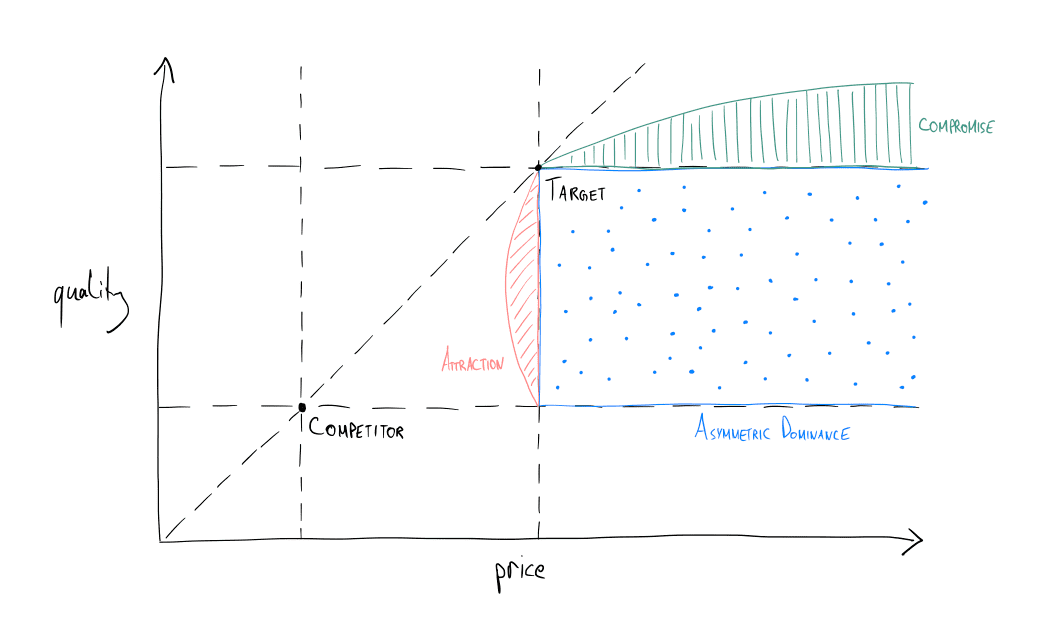Decoy effects
"[...] humans rarely choose things in absolute terms. We don't have an internal value meter that tells us how much things are worth. Rather, we focus on the relative advantage of one thing over another, and estimate value accordingly."
Dan Ariely
The decoy effect occurs when a consumer's preference between to options is altered when a third option is added. Three different types of decoy effects can be seen in the diagram below: asymmetric dominance effect, attration-effect and compromise effect. When the decoy product is placed in the marked areas, the target product becomes more attractive.

The example for all thee effects will be that of a mobile phone plan where we use volume of high-speed data as a proxy for quality.
| Target | Competitor | |
|---|---|---|
| Price | 30€ | 20€ |
| # GB | 10 | 6 |
Asymmetric dominance
The asymmetric dominance effect applies when the decoy has a higher price and worse quality than the target.
| Target | Competitor | Decoy | |
|---|---|---|---|
| Price | 30€ | 20€ | 35€ |
| # GB | 10 | 6 | 9 |
Attraction effect
The attraction effect applies when the decoy has a slightly lower price than the target and the quality is between competitor and target.
| Target | Competitor | Decoy | |
|---|---|---|---|
| Price | 30€ | 20€ | 28€ |
| # GB | 10 | 6 | 7 |
Compromise effect
The compromise effect applies when the decoy has a higher price than the target but its quality is not higher than that of the target — and not lower than the competitor's.
| Target | Competitor | Decoy | |
|---|---|---|---|
| Price | 30€ | 20€ | 50€ |
| # GB | 10 | 6 | 12 |
Acknowledgement: Based on lecture notes from the winter term 2017/18 lecture Digital Communities at TU Berlin.
